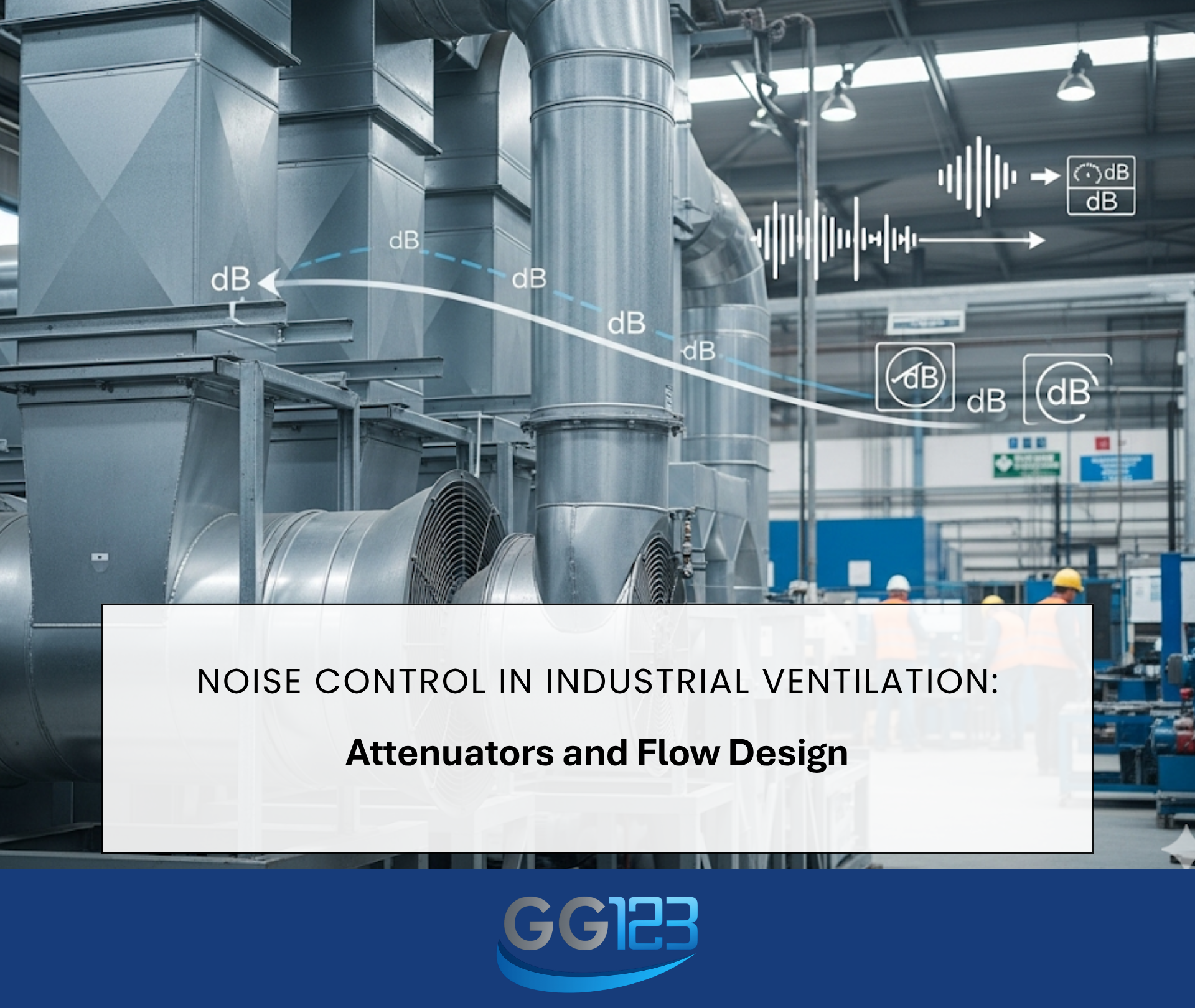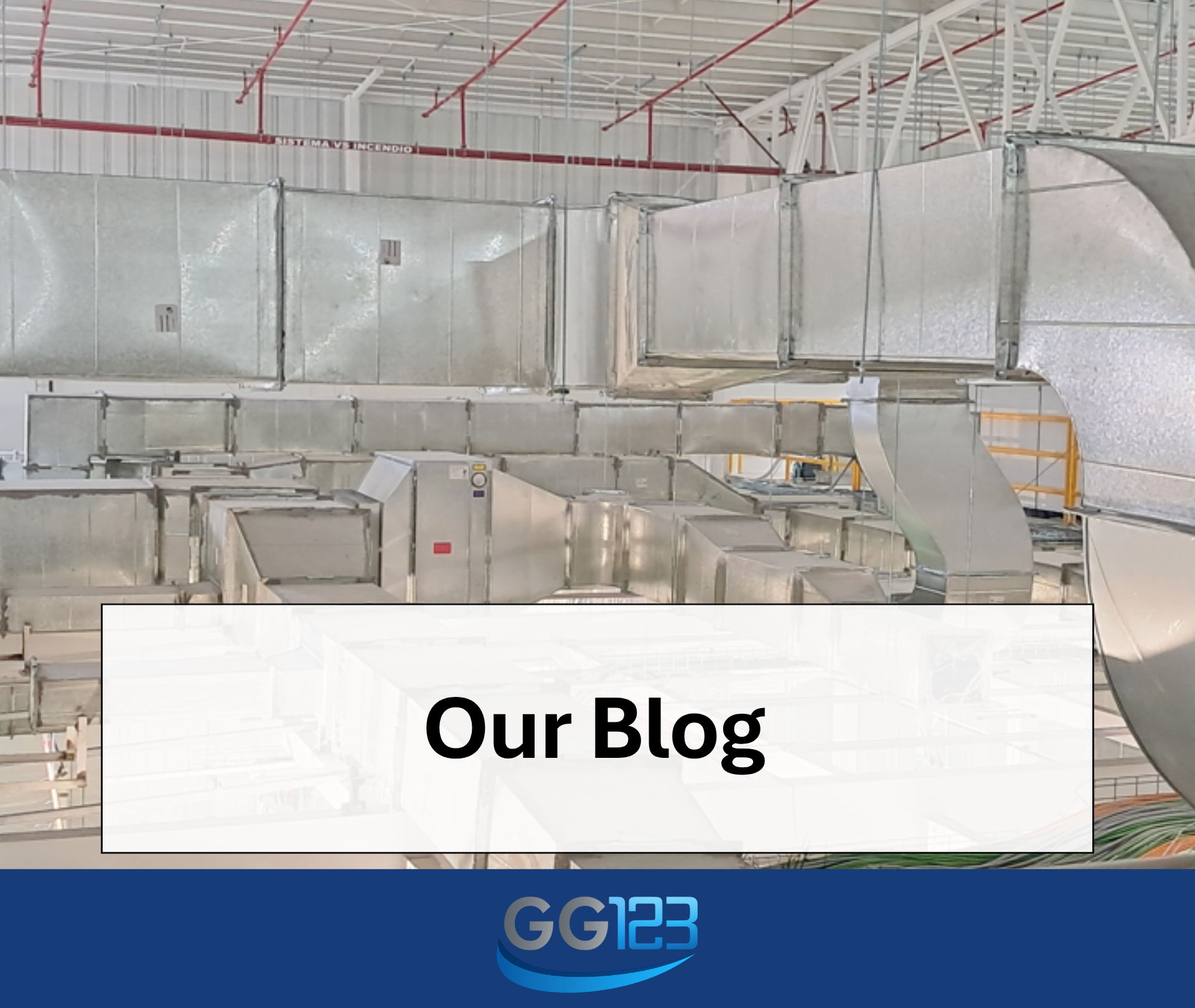
Noise Control in Industrial Ventilation: Attenuators and Airflow Design
Noise in ventilation systems is not just an annoyance — it impacts productivity, safety, and the employee experience. At GG123 México, we combine airflow design, acoustic attenuators, and high-precision manufacturing to lower sound levels without sacrificing airflow, pressure, or energy efficiency. Our approach is supported by BIM, automated machinery, and an integrated execution model that speeds up installation times.
Where does noise come from in a ventilation system?
Typical sources
- Equipment: fans or AHUs generating mechanical and aerodynamic noise.
- Turbulence: tight elbows, abrupt transitions, or sudden section changes.
- Excessive air velocity: ducts and grilles operating above recommended limits.
- Structural vibration: transmission through supports or casings.
Impact on business
Beyond discomfort, noise increases fatigue, hinders communication, and may exceed internal or regulatory limits. Proper acoustic control enhances the work environment and reduces operating costs related to rework or on-site improvisation.
Strategies from the airflow design stage
1) Target velocities and sectioning
Selecting air velocities that match the function of each area (offices, production, warehouses) is the first step. A properly sized duct reduces noise generation and pressure losses.
2) Geometry that prevents turbulence
- Large-radius elbows or elbows with guide vanes.
- Transitions with long, symmetrical ratios (e.g., 3:1).
- Plenums to distribute airflow without direct impact on grilles or diffusers.
3) Balancing and control components
Use low-noise dampers, place control dampers away from grilles, and properly balance the network to prevent whistling or hissing sounds. Correct balancing stabilizes flow rates and reduces noise peaks.
4) Isolation and support
Flexible connectors on equipment, vibration isolators, and engineered supports prevent structures from acting as resonance boxes.
Acoustic attenuators (silencers): when, where, and how
Types and materials
- Rectangular (baffles): for square/rectangular ducts and high airflow volumes.
- Cylindrical: ideal for spiroducts and circular branches.
- Resonant chamber / micro-perforated: effective for specific frequency bands.
Recommended placement
- At the fan discharge/intake to reduce source noise.
- Before grilles or diffusers in sensitive areas.
- In plenums and branches with architectural restrictions.
A proper design avoids excessive pressure drops and maintains system performance.
How GG123 solves it
1) BIM-based engineering
We model the entire network in BIM to position attenuators, size sections, and resolve interferences. This allows us to anticipate pressure drops, minimum straight lengths, and real installation and maintenance space.
2) Automated manufacturing
Our automated machinery ensures precise tolerances, uniform flanges, and consistent seals. Thus, attenuators and ducts (square/rectangular, spiro) arrive ready for installation, with consistent quality and less rework on site.
3) Integral solution and logistics
We supply the entire network: square, rectangular ducts, spiroducts, fittings, elbows, and reducers. We coordinate sequenced deliveries (JIT) and offer national and international coverage throughout Latin America.
GG123 competitive advantages
- Use of BIM technology for precise decision-making.
- Cost savings by avoiding rework and optimizing pressure drop.
- Time reduction through prefabrication and fast installation.
- Automated machinery ensuring consistent quality.
- Comprehensive solutions from engineering to logistics and assisted installation.
- Product variety: square/rectangular ducts, spiroducts, fittings, elbows, reducers.
Use cases
- Manufacturing plants and facilities with personnel exposed to noisy equipment.
- Hotels and offices requiring acoustic comfort.
- Logistics and data centers with mixed-use areas.
- Industrial kitchens where extraction may cause whistling or vibration.
Next steps
If you need to reduce noise levels in your ventilation system, we perform a quick diagnosis, propose an airflow design, and define attenuators with their pressure drops to maintain system capacity.
Note: The final selection of attenuators and air velocities must be validated with the executive project, target dB(A) levels, and space or pressure-drop constraints.



